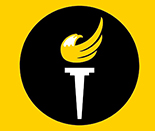State Welfare Competition

State Welfare Competition
After all social programs at the federal level have been transferred to the many states, the states will be in competition among themselves in the supply of social services, assistance, and welfare. All states will have their own level of taxation and their own level of social services, assistance and welfare.
The competition between the states for providing the least amount of Social Services will be under negative feedback control. When a stingy state reduces Social Services, and a generous state increases Social Services, there will be a migration of the poorest individuals from the stingy state to the generous state. The generous state will experience an increase in the drain on tax revenues to support Social Services. The Stingy state will experience a decrease in the drain on tax revenues to support Social Services. Consequently, the generous state will decrease it Social Services while the stingy state will increase it social services. Thus, through the migration of the poorest individuals through interstate migration, there will be an equalization force applied upon the many states two level the amount of social services of all the many states.
The federal government can help the states by providing a model example or social service regime so as to provide direction to the states to quickly maintain that equilibrium so that all Americans can receive the same level of social services regardless of the state in which they are domicile.
This is America where all should be treated equally by governments no matter where they live. Additionally, because the delivery of Social Services is entirely local, the provision of Social Services becomes more efficient leading to increased amounts of Social Services for each taxed dollar.
